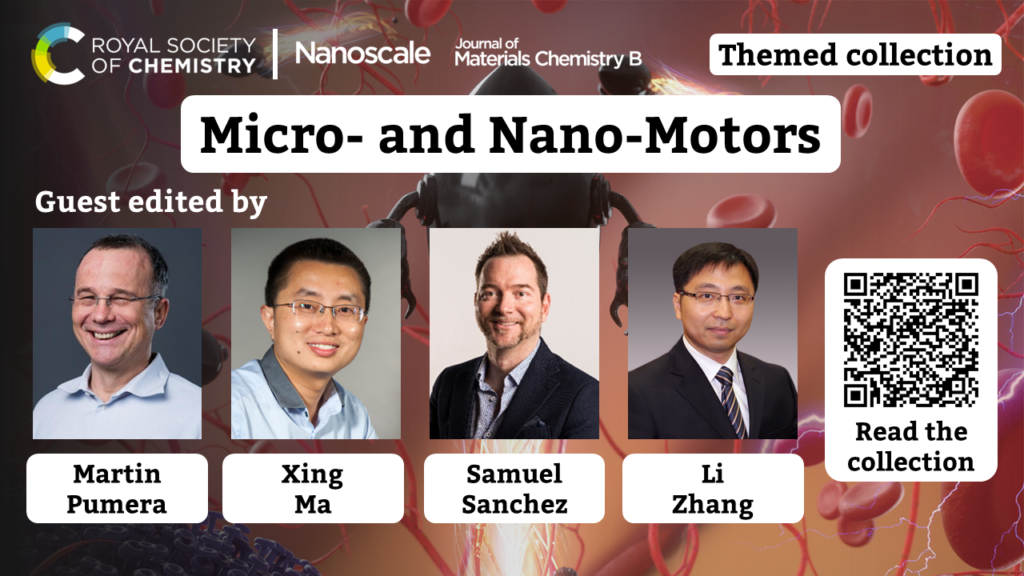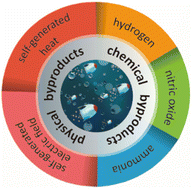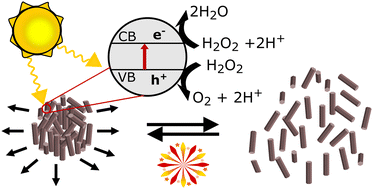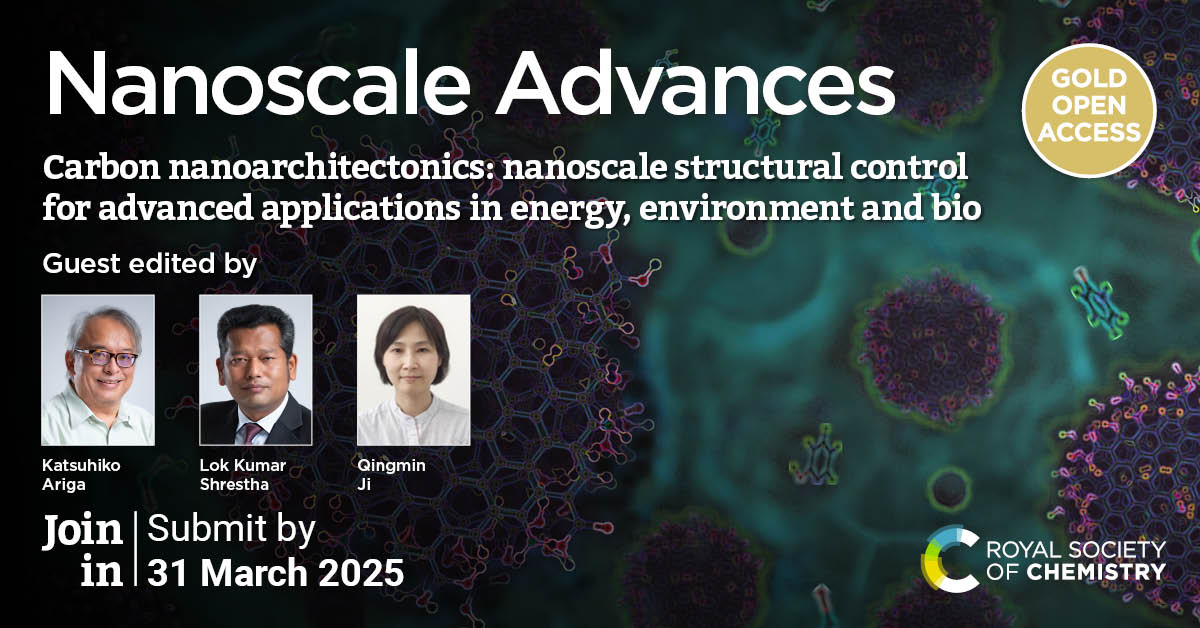Micro- and Nano-Motors
Guest edited by Martin Pumera, Xing Ma, Samuel Sánchez Ordóñez and Li Zhang
Micro/nano-motors (MNMs) are miniaturized devices or structures that can covert other forms of energy harnessed from the surrounding environment into mechanical motion. As an emerging technology with a highly multidisciplinary nature, MNMs involve research efforts from materials science, physics, chemistry, biomedical engineering, etc., and in virtue of their small size and controllable mobility, they have demonstrated revolutionary potential in sensing, biomedicine and environmental applications among others. We are delighted to share this special collection in Nanoscale, and Journal of Materials Chemistry B dedicated to the state of the art of micro- and nanomachines, with emphasis on the design and fabrication, propulsion mechanism, imaging, safety, and application of micro- and nano-motors in a variety of fields.

Professor Martin Pumera, Professor Xing Ma , Professor Samuel Sánchez Ordóñez, and Professor Li Zhang served as guest editors for this collection, discussing the virtue of micro and nano motors’ small size and controllable mobility, while highlighting the revolutionary potential applications, in their introductory editorial.

You can explore the collection and read the introductory editorial from our guest editors below, with all articles free to access until the end of December 2024.
Read the introductory editorial
Check out some of the featured articles:
|

Shape-controlled movement of Zn/SU-8 micromotorsNanoscale Adv., 2024, Advance Article, DOI: 10.1039/D4NA00721B
|
Eliminating waste with waste: transforming spent coffee grounds into microrobots for water treatment
Nanoscale, 2023,15, 17494-17507, DOI:10.1039/D3NR03592A
|
|
Anna Jancik-Prochazkova, Nanoscale, 2023,15, 5726-5734, DOI:10.1039/D3NR00098B
|
We hope you enjoy reading this collection and look forward to showcasing more work on micro and nano motors in the future. Please continue to submit your exciting work to Nanoscale and Journal of Materials Chemistry B.

















 Lok Kumar Shrestha
Lok Kumar Shrestha
 Qingmin Ji
Qingmin Ji